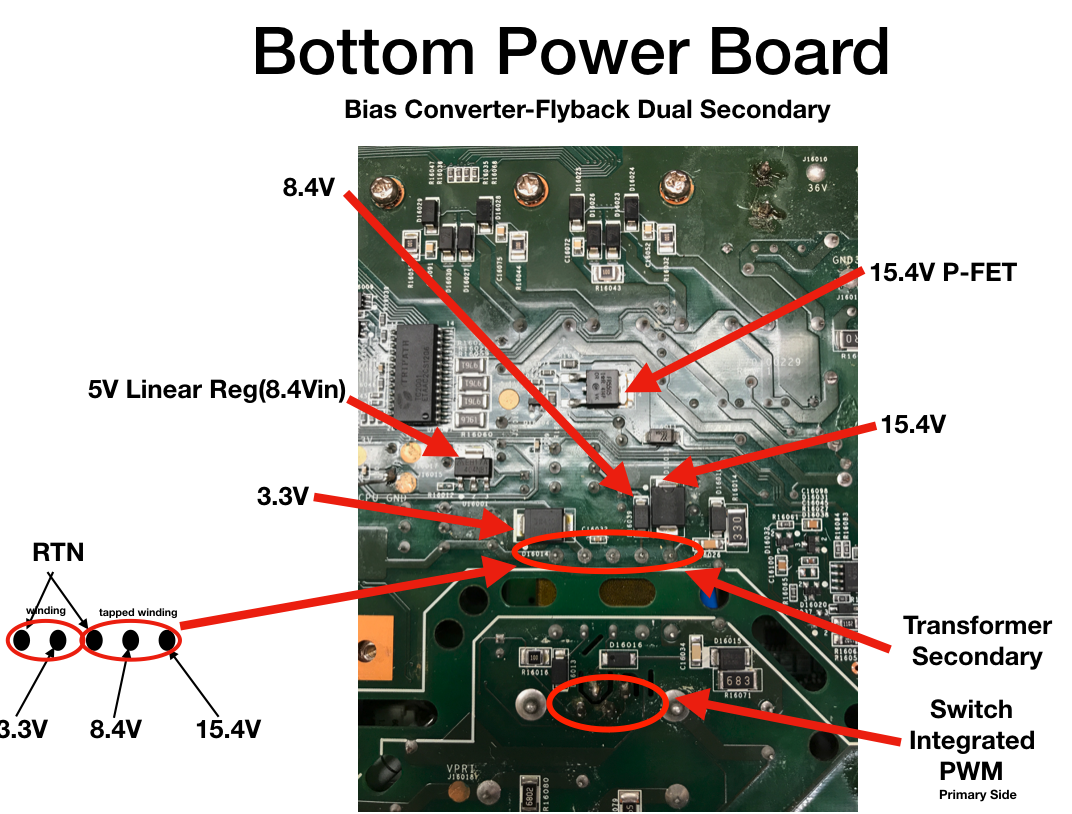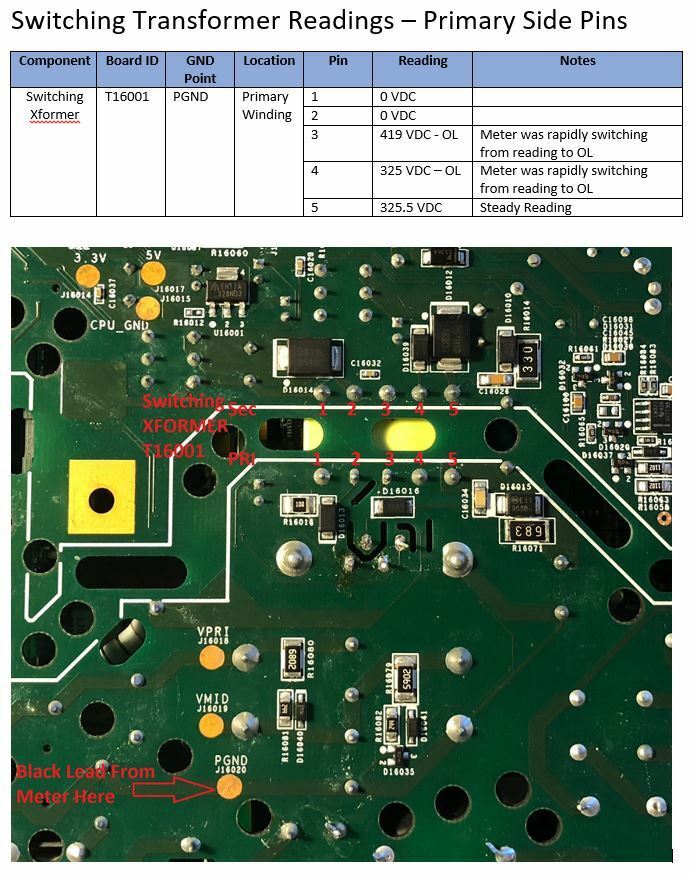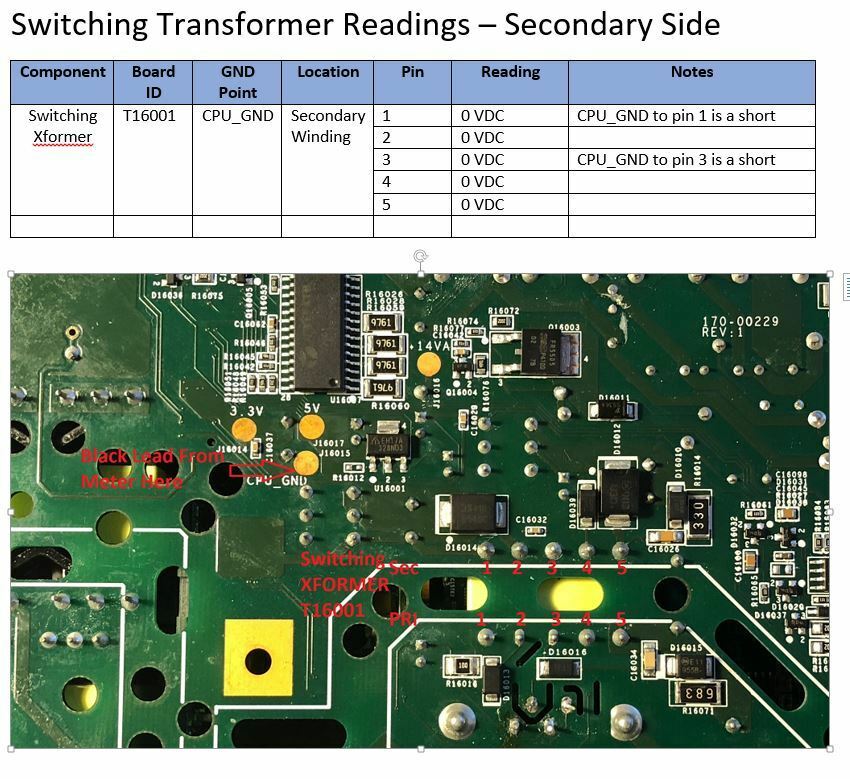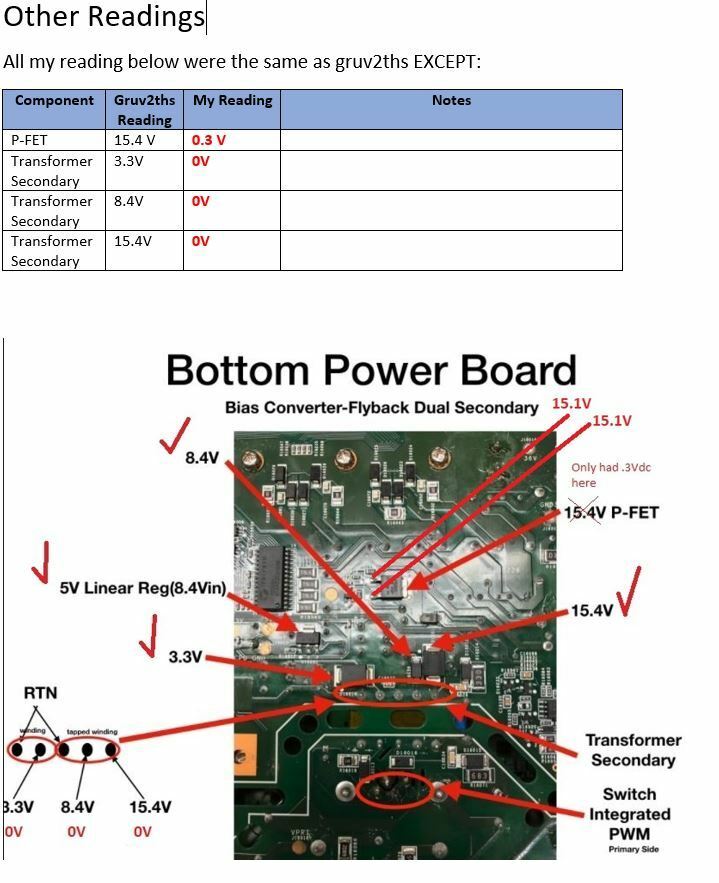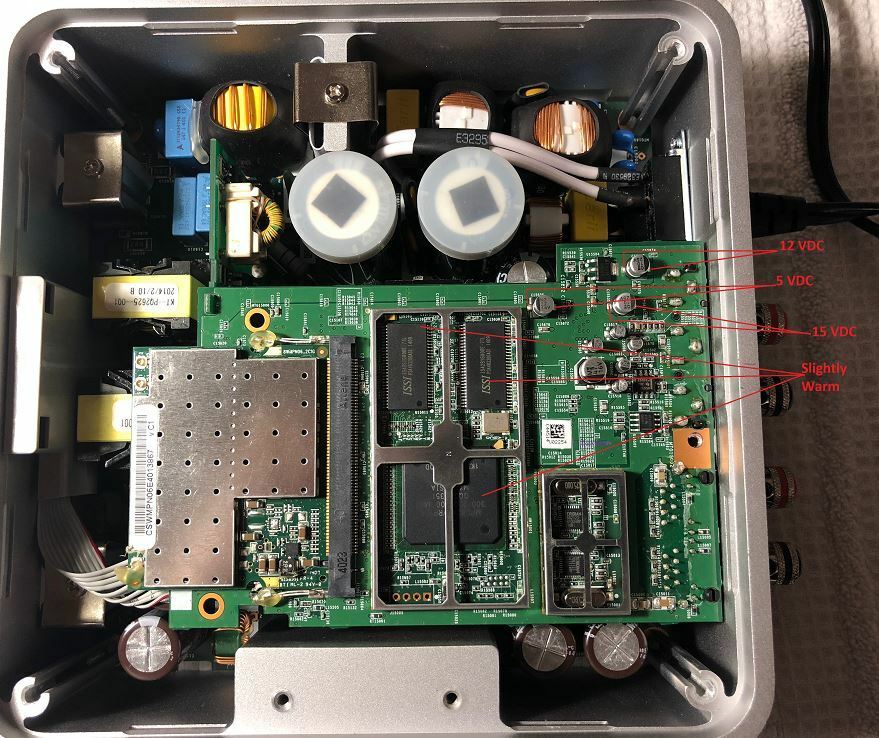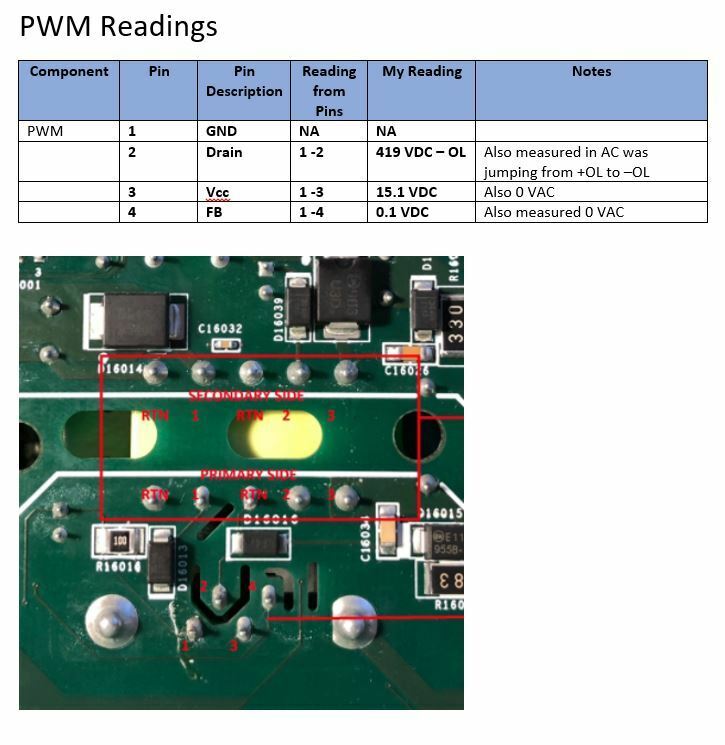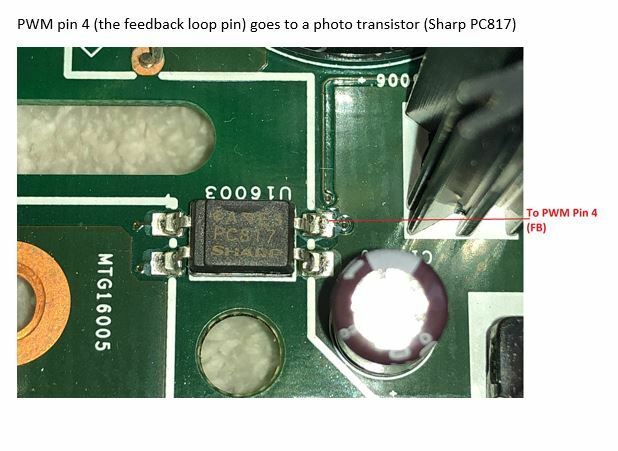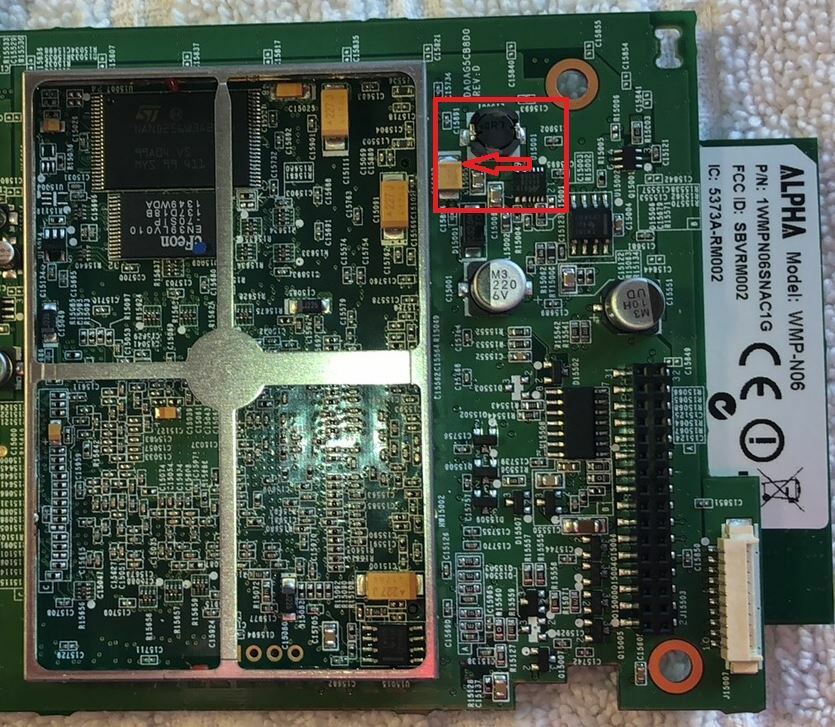Repair ZP120
Has anyone taken one apart?
My Sonos ZP 100 amp just started acting up so I opened it up to find what appears to be a blown (missing) capacitor.
Trying to locate a replacement cap, but there are no markings on it.
It appears to be of type SMD MLC but that is all I can figure out.
Any guesses to a suitable replacement?
It measures approx. 3mm x 1mm ..
Perhaps a 1206 ?
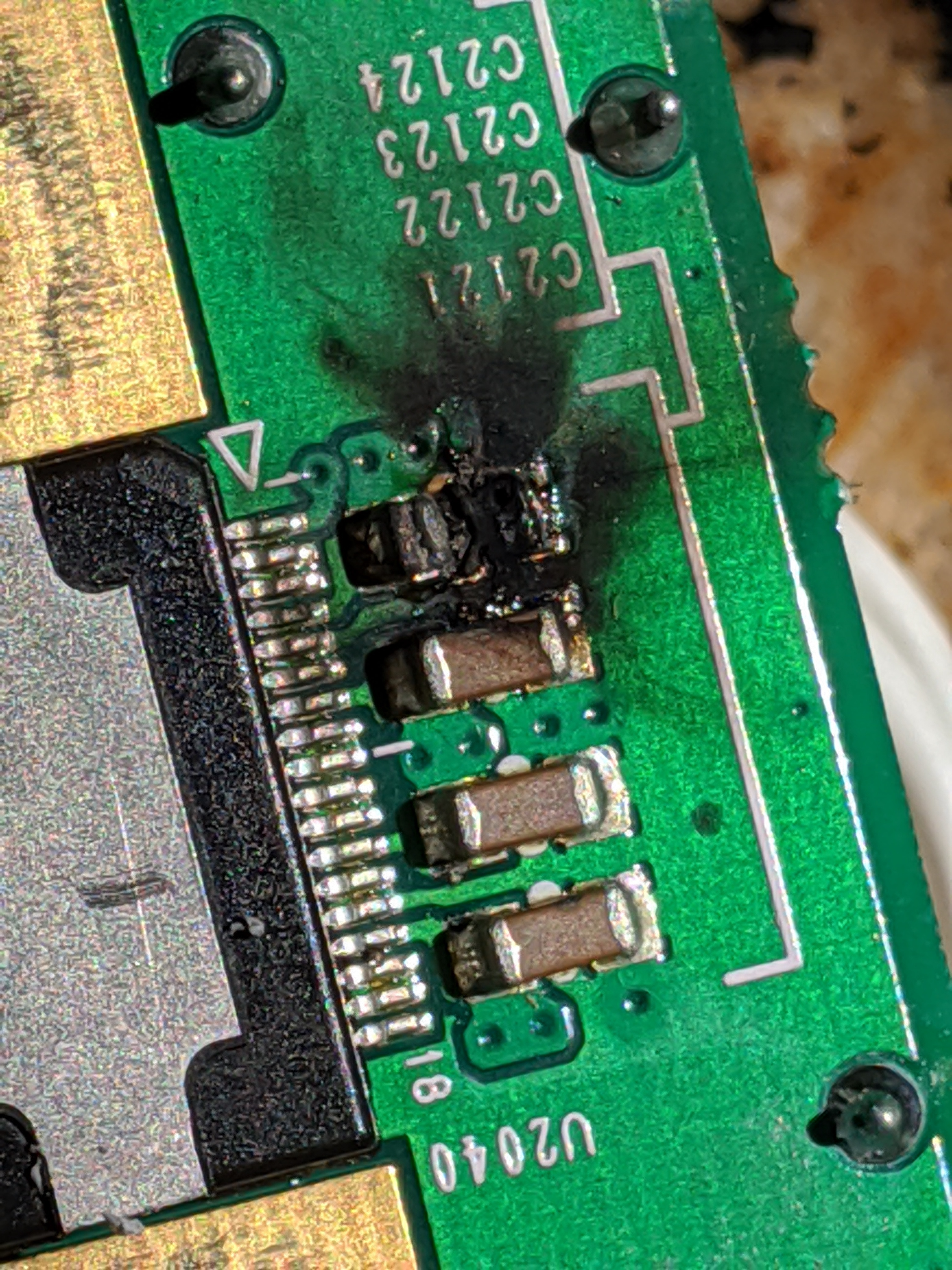
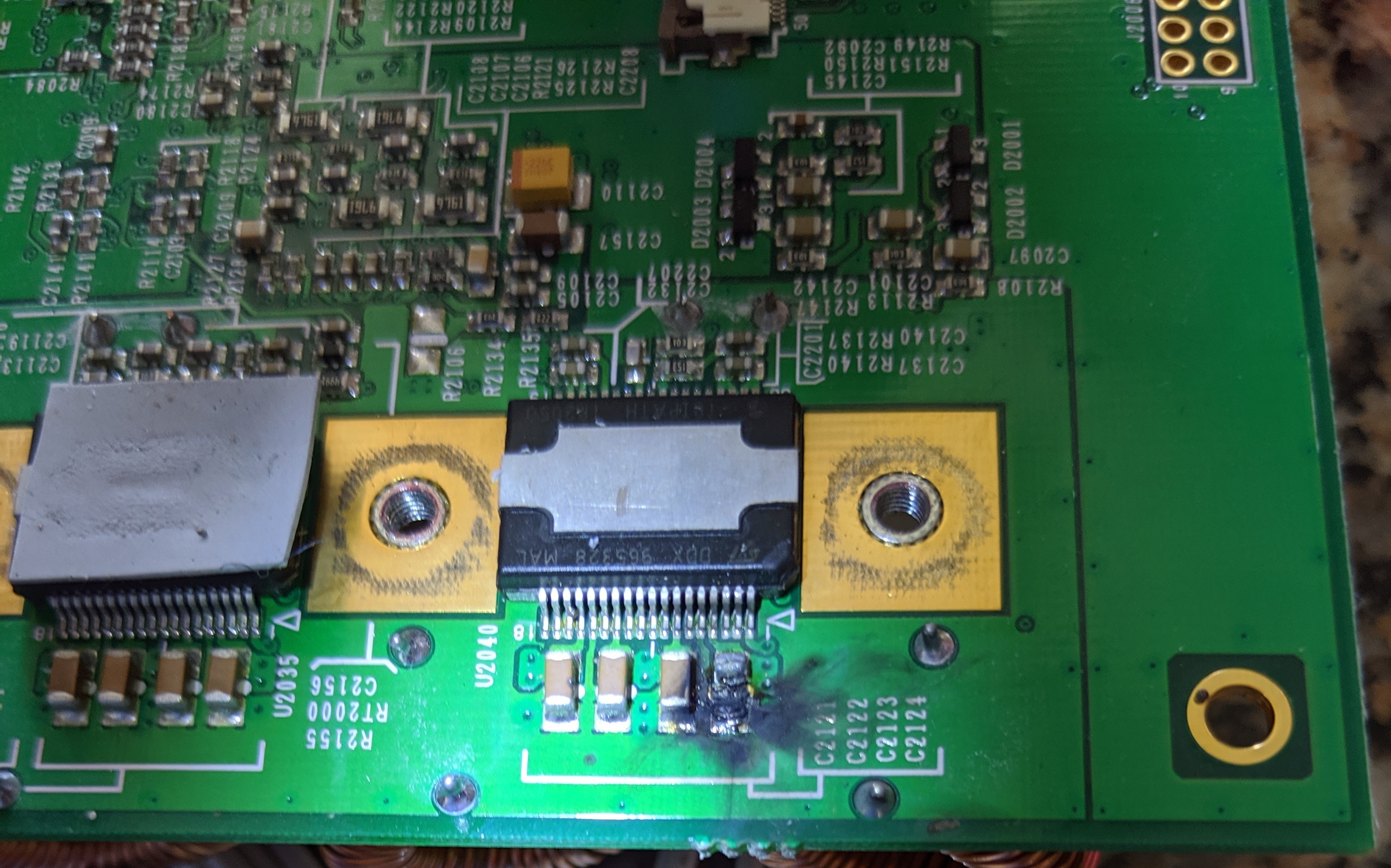
I replaced the mosfets and now I am having the bias voltages. The 3.3V and 5V is correct, but the normally 15V shows up as 13.5V on my board. Still no status light and there is a ticking sound on startup which repeats about 6 times with an interval of about a second. I am out of options at this moment. It seems like the voltages coming out of the transformer might be a bit lower than usual? The 3.3v and 5V might be correct due to the regulator, but the 15V is not there as I think it comes straight from the transformer. Also the 5V_sw pad shows about 0.2 volts.
When I put my ohm meter on the failed inductor it read .890 M ohms. The size seems to be a 0603, but I will need to figure out the value and order one of these as well. This one is going to be very challenging to replace as it is inside the metal housing that is closest to the faulted caps and resistors. So the story continues. I am going to be really happy if replacing these parts makes this amp functional again!
One thing that keeps bugging me though is early on when I was measuring the voltages around the bias converter. I did not have some of the same voltages that gruv2ths said he did. I am wondering if they may still be something wrong there.
@gruv2ths and @m0untainman - Could either one of you give me some detailed readings of what you have on your functioning amps as compared to the below?
That said, without that part working, you shouldn't have gotten the white light to show any color (at least that was the way it was for me).
Is this thread completely dead?
Yesterday I had some time and on a hunch I replaced the PWM but it did not fix the issue. I am really stumped by this but also determined to understand why it is failing and fix it 🙂 I just sent you and gruv2ths PM's asking about getting some detailed readings and what GND points you used. In some of my first posts I was using chassis as GND and I am not sure if that was correct. I would like to start over fresh and try to troubleshoot the switching power supply to see if it is working properly or not.
Also on the white LED you mentioned above, I have never really gotten the LED to shine brightly, just very (and I mean very) dimly lit.
Hi, can anybody tell me the vale of resistor R15550, located under the WiFi module on the ZP120?
This component is missing on my board ( knocked off and lost by previous “repairer”). Oddly, the player still works, but I would like to replace it.
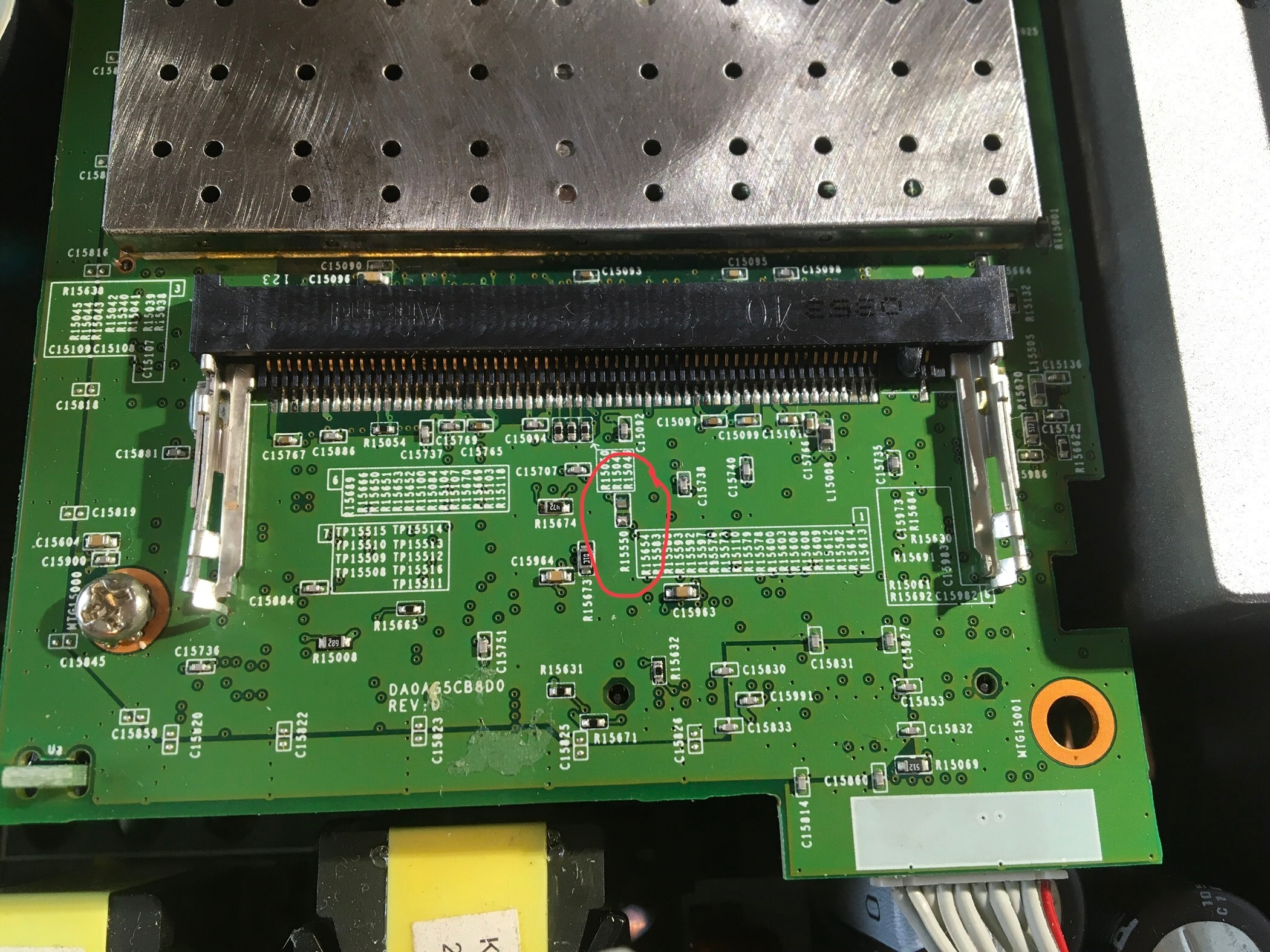
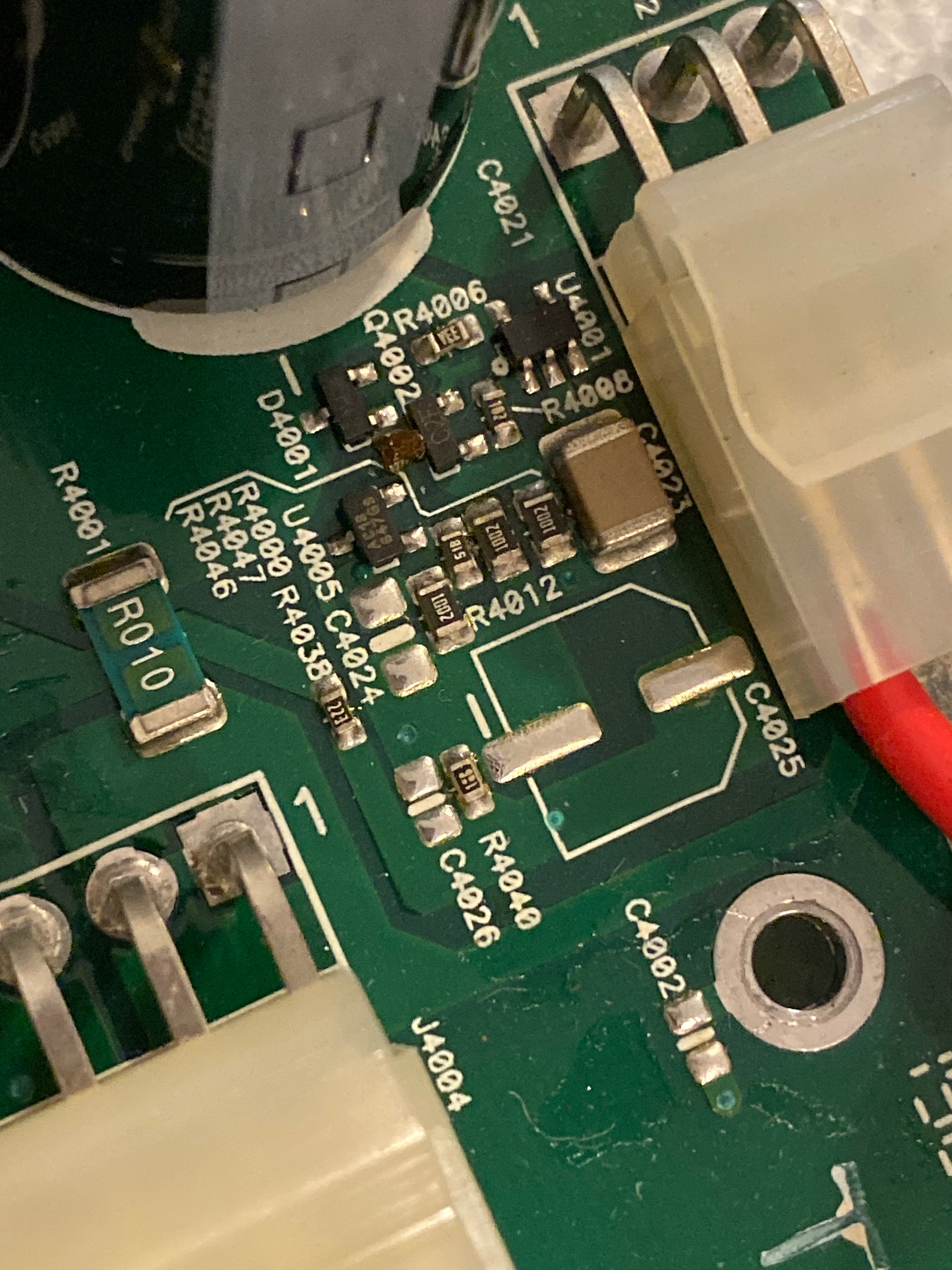
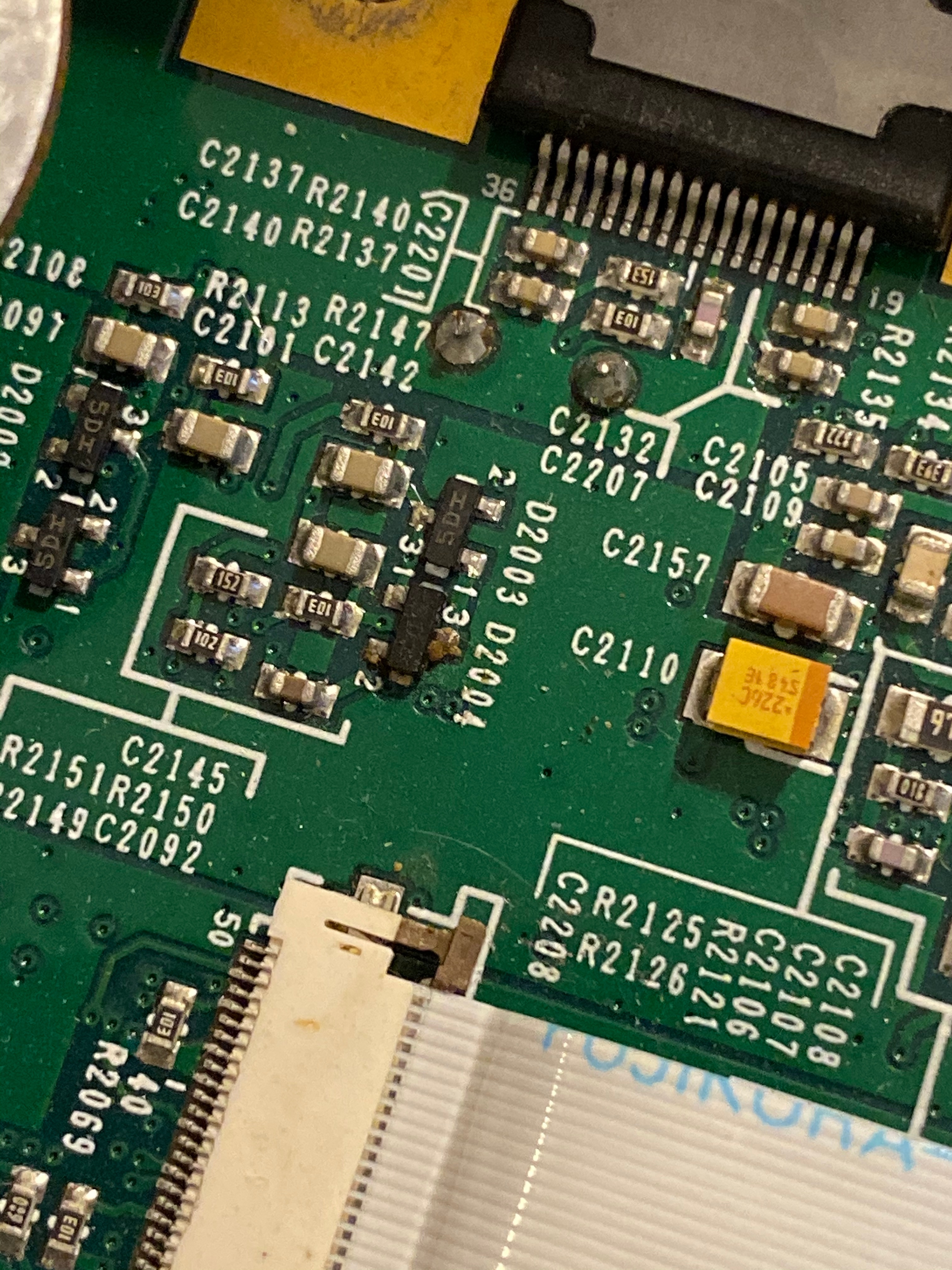
I know it’s been some time, but I have a zp100 and it is blinking a constant white light, never going solid. I have the unit completely torn down and I’ve found 2 possible charred components.
There were some smart people posting in this thread. Hoping they are still around.
I’ve read the entire thread but it’s been a bit unfortunately.
On another note, while the AMP is plugged in, there seems to be some voltage going to the logic board as I have read 5V across some of the small electrolytic caps. Also some of the chips that are under the metal housing are slightly warm to the touch. Not hot mind you, just slightly warm like you can tell voltage is applied. I am not sure what that means but I thought it was worth noting.
I seem to be a bit lost for why this thing is not working.
Here are the voltage reading pictures:
Also here are some readings from the logic board:
Here’s a similar issue that your info helped me solve (I’m 99% sure)...
Well, no joy - but oh so close…
I ran 4 jumpers where those traces should be (there are four total connections from the small power supply area to the riser - all four jumpers were destroyed. I replaced the dead resistor too. I also had to bridge the two grounds on the secondary side. This is all on top of having already replaced some capacitors, and the two mosfets.
It booted up ok, but when I hit play I still get the white/orange cycle.
The difference this time is that the 36V section of the secondary does ramp up to 36V momentarily after I hit play. Once the yellow comes on it falls back to 15V.
The real surprise (to me) is that there is only 280V on the primary side of the supply instead of the usual 320V. That tells me that there is either still something wrong there, or there is some kind of power draw on the secondary side that is preventing the primary from reaching 320V. I disconnected the 15v/8v section of the secondary and tried again -- this time the primary gets to 306V. I think that this means the primary isn’t generating enough power to drive the load properly… My logic is that if there was a short on the 3.3V rail, I should still get 280V, and if there was a short on the 15v/5v rails then I should get 320V.
I’ll keep looking but honestly I’ve been through this one pretty thoroughly so don’t know what to look for any more.
I have another ZP120 that is now showing similar symptoms (including 280V on the primary) but arrived to its condition via a different route. That one had a bad transformer primary. I removed the transformer and found that its winding connections had rusted away. I was able to get them reconnected, but it was microsurgery and I must have damaged something. When I reinstalled it, it now boots ok but also goes into the white/yellow cycle when I press play. I think that the primary winding got shorted and it just isn’t generating enough voltages on the secondaries to make it work.
The other possibility for both of these is that the amp chips are fried. I probably don’t have much to lose to try replacing those at this point.
I’m not entirely sure but I did replace it with a new one a while ago. I do have some more new ones that I can try. Do you know how I can test the PWM to see if it is good?
Couple of observations.
-if you are getting the 3.3,8ish,15 on the secondary then the bias converter PWM is working correctly.
-The reason you are seeing 0V on the transformers pins is because you are looking at AC with your meter set to DC. Those biases measured in the logic card say to me that the bias converter is running and the output is making its way to the logic card. Good sign
-I can only think of one thing left to do, and that is measure the output of the buck converter on the bottom of the logic card. There is a inductor with a (normally) yellow electrolytic cap. Solder a wire to the striped side of the cap and put the card back in and plug in. You can put the red lead on the wire and the black one to chassis. Should have 1.5V output.
Do you know much about reading serial (UART) from a computer? You may have noticed a 4 pin header under the EMI shield that you removed. There may be some diagnostic clues coming out of that serial headder.
The one I am working currently has a confirmed good power and riser boards and shows up in the Sonos app but when you push play I get orange and white blinking leds. Wanting to read that header and see if it can give me a clue as to why mine shizes the bed when I push play.
I don’t see anything that looks particularly bad in those photos unless I am missing something.
I recall the symptoms you are experiencing being related to the dram check but I could be wrong.
Fantastic, thanks Tim(?).
not often a cheap repair with Sonos!
i’ll go and find a bit of wire now!
Kindest regards,
Andy
Couple of observations.
-if you are getting the 3.3,8ish,15 on the secondary then the bias converter PWM is working correctly.
-The reason you are seeing 0V on the transformers pins is because you are looking at AC with your meter set to DC. Those biases measured in the logic card say to me that the bias converter is running and the output is making its way to the logic card. Good sign
-I can only think of one thing left to do, and that is measure the output of the buck converter on the bottom of the logic card. There is a inductor with a (normally) yellow electrolytic cap. Solder a wire to the striped side of the cap and put the card back in and plug in. You can put the red lead on the wire and the black one to chassis. Should have 1.5V output.
Do you know much about reading serial (UART) from a computer? You may have noticed a 4 pin header under the EMI shield that you removed. There may be some diagnostic clues coming out of that serial headder.
The one I am working currently has a confirmed good power and riser boards and shows up in the Sonos app but when you push play I get orange and white blinking leds. Wanting to read that header and see if it can give me a clue as to why mine shizes the bed when I push play.
Thanks gruv2ths: I just saw your reply after I posted my recent reply about the PWM readings. Not sure about reading the UART. I have used serial ports in the past, but only to connect to consoles on enterprise class network switches.
I will have some time later to try your suggestion about measuring the 1.5 V of the buck converter and will post my findings.
Is this the cap that you are talking about?
Reply
Enter your username or e-mail address. We'll send you an e-mail with instructions to reset your password.





